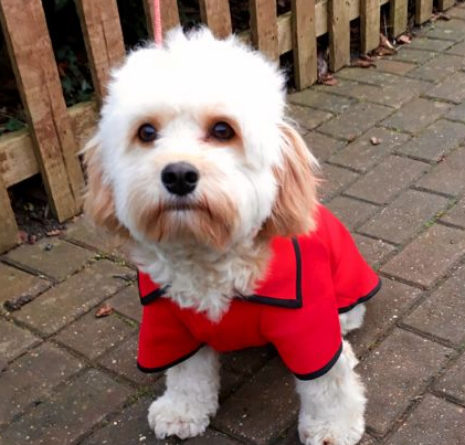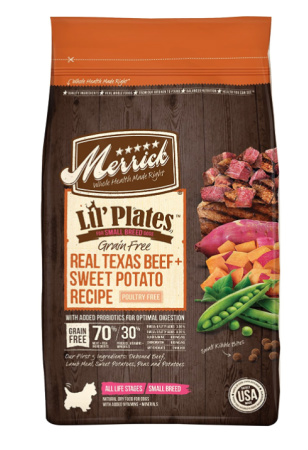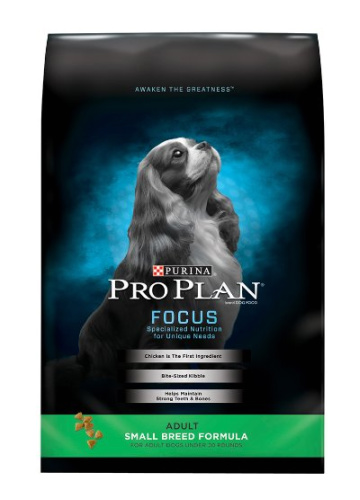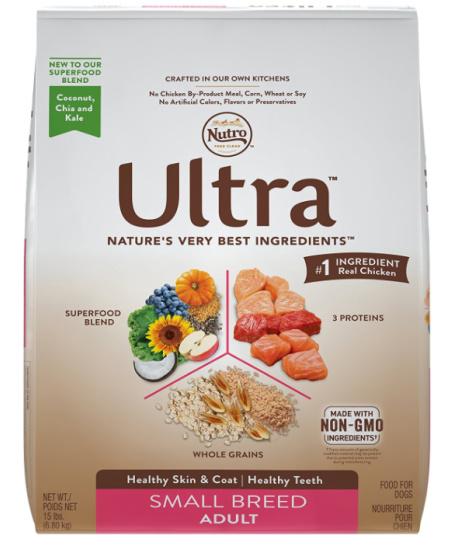Cavachon Dog Breed Temperament Diet Training and Training
Open your door to a Cavachon, and you’ll welcome a friendly, sweet-tempered bundle of fur. This little crossbreed is the perfect companion for the right person.
What is a Cavachon?
The Cavachon is a cross between a Cavalier King Charles Spaniel and a Bichon Frise. It is a designer dog that hasn’t gotten recognition from national kennel clubs yet.

Cavachon History
Hybrids like the Cavachon came about because of the shrinking gene pool for purebred dogs. Dogs like the Cavalier were in short supply. Breeders thus tried to breed dogs that had the loving temperament of the Cavalier and the resilient constitution of the Bichon Frise.
We know that the first Cavachon appeared in 1996, but little beyond that. However, we do have lots of information about its parents.
1. The Cavalier King Charles Spaniel
The Duke of Marlborough, John Churchill, first kept King Charles-type Spaniels for hunting at the beginning of the 18th century. These dogs were fast enough to keep up with a trotting horse. He named these dogs Blenheim in honor of his victory at the Battle of Blenheim.
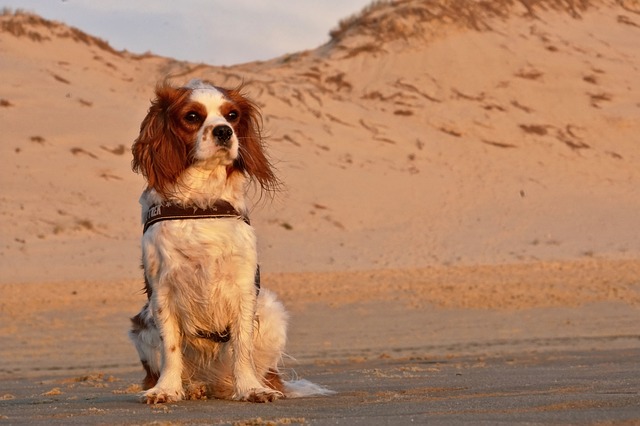
They didn’t gain much popularity, so breeders tried to recreate them at the start of the 20th century. Still, there were differences between them and the newly-bred dogs.
American Roswell Eldridge decided to intensify the search for the perfect Blenheim Spaniel. He offered a prize of 25 pounds for the best male and female specimens of the breed. Though he died before the dogs came to be, breeders supported his desire to recreate them and formed the first Cavalier Club in 1928.
Developing the breed during the Second World War was difficult as many of the existing Spaniels had died. Only six of them survived the war. These were Ann’s Son, his littermate Wizbang Timothy, Duce of Braemore, Kobba of Kuranda, Carlo of Tiweh and Aristide of Tower.
The Cavalier came to the United States only recently. W. Lyon Brown brought the first one to America from the United Kingdom in 1956. He formed the first Cavalier King Charles Club with Elizabeth Spalding. It still exists today. The Cavalier gained American Kennel Club recognition in 1995.
2. The Bichon Frise
The Bichon Frise is supposedly a French breed. However, the originals were Spanish sailing dogs. The French loved them and developed them as lap dogs.
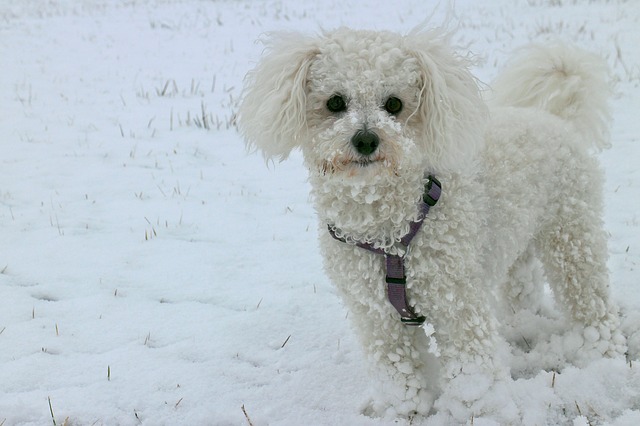
You may have noticed that the Bichon resembles the Poodle. Indeed, it descends from Poodle-type dogs like the Barbet. Apparently, the Spanish first introduced the Tenerife, otherwise known as the Bichon, in the Canary Islands. The Bichon Frise is one of the four modern breeds that include the Tenerife, Bolognese, Maltese, and Havanese.
Traders often used them as barter because they had cheerful personalities. Italian sailors brought them to Europe, where nobles soon favored them. They had characteristic lion’s manes. The Tenerife gained popularity in France during the reign of Francis. It gathered even more fans in the court of Henry III. Francisco de Goya depicted the little fellow in his paintings.
Interest in it waned for a time but picked up during the reign of Napoleon III. You’ll be surprised that this pure breed was a stray that roamed the streets. The little Tenerife accompanied organ grinders and did tricks in circuses.
The Societe Centrale Canine, the national kennel club of France, recognized the breed on 5 March 1933. The Fédération Cynologique Internationale proposed ‘Bichon Frise’ as the name of the dog.
It arrived in the United States in 1955. The first litter came about in 1956. Two breeders in different parts of the nation acquired Bichon Frise dogs in 1959 and 1960. It became eligible for showing in the non-sporting dog group in 1973. The Bichon Frise was the 40th most popular breed in 2013.
Cavachon Appearance
Like all crossbreeds, the appearance of the Cavachon may vary, depending on the parent it takes after. Here is how it looks, in general.
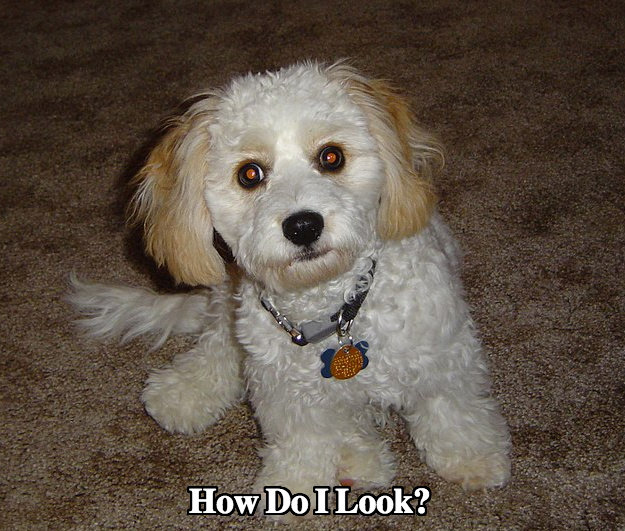
1. Size
First of all, it is a lapdog that measures about 12 to 16 inches in height. At between 10 and 20 pounds, it isn’t heavy. Its size also depends on whether it is a first generation Cavachon (Cavalier and Bichon Frise bred) or a 2nd generation Cavachon ( Cavachon to Cavachon bred).
2. Eye colors
Both the Bichon Frise and the Cavalier have brown eyes, so a Cavachon puppy would as well.
3. Nose
A Cavachon’s nose, like other dogs’, is usually black.
4. Coat Possibilities
Cavachons usually have soft, silky coats. Hairs are typically wavy. Colors may include white, apricot, tan, or a blend of all three.
The coat is the about medium length and quite dense, though not too much so. Since it’s hypoallergenic and not prone to shedding, it doesn’t require much maintenance. It needs weekly brushing.
The Cavachon Temperament
Both parents of the Cavachon are even-tempered and pleasant creatures, so it’s an excellent companion. Here’s a little more about its personality.
The Bichon Frise is a merry soul, so the Cavachon is as well. It loves to play and can be somewhat mischievous. Your children will have hours of fun with it. It enjoys playing games and going to dog runs.

The Cavachon has the Bichon Frise’s active streak. It probably chased mice, squirrels, and seagulls on board sailing vessels, so it would have a propensity to hunt. The Cavalier loves the chase as well. All said, keep your Cavachon in a fenced yard.
The Cavalier loves comfort. Don’t be surprised to find it sleeping a lot of the time. It will occupy your pillows more than your head will.
Both parents of the Cavachon are perfect companions, so it’s bound to be an ideal addition to your family. It usually loves people and pets, but some Cavaliers and Bichons are timid. Hence, early socialization is necessary.
If your Cavachon is like the Bichon Frise, it would have an independent streak. But like the Cavalier, it may have separation anxiety. Use the techniques suggested in this article to deal with this concern.
You may have a task housebreaking your Cavachon if it’s like its Bichon parent. Bichon Frises are notoriously hard to house train, but the Cavalier’s eagerness to respond may counter that to some degree. You may experience some house training issues, but none that you can’t solve.
Some Bichons tend to bark, so your Cavachon might as well. Bichons have a high-pitched bark that may irritate you and your neighbors. Do use the tips given on dealing with annoying dog behaviors to address this problem.
Your Cavachon will make an excellent watchdog if it takes after its Bichon parent. Don’t worry about it going overboard as it isn’t aggressive.
The Cavalier has a propensity for many health issues, so the Cavachon might too. We discuss these in another section of this guide. Do send it to your veterinarian for regular checks.
You may not want the Cavachon if you don’t want to spend too much time on grooming. It has a wavy coat that may become tangled, so do keep this in mind if you dislike mats and tangles.
Also, the Cavalier sheds a lot. Your Cavachon probably would as well. Do consider this before welcoming it into your home.
Choosing a Cavachon Puppy
A puppy is a new family member, so it makes perfect sense to choose one that fits in with your family and its lifestyle. Here’s what to look out for when picking out a new Cavachon.
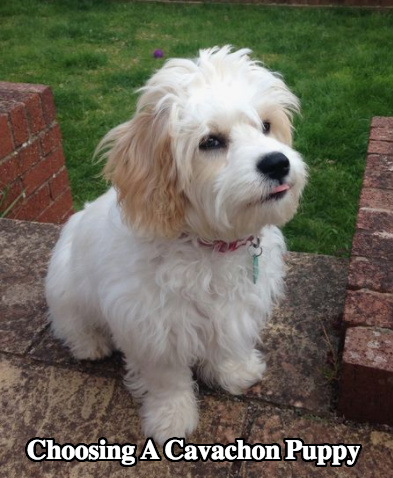
1. Choose a reliable breeder
First, get your Cavachon from a reliable breeder. He will breed his dogs in spacious, sanitary conditions if he is responsible.
Mothers have to wean the pups for about eight weeks. Your breeder shouldn’t allow you to take a puppy home straight away. He should also ensure that the puppies have their vaccinations.
2. Timing
Then, consider if the puppy will fit into your family ‘s timeline. You may be moving to a new home, so think whether you can take the puppy home in good time. You will need to pass on the litter of you have vacations or renovations planned.
3. Gender
You may have a gender preference for your new Cavachon. Perhaps you’re after a female, but your breeder’s existing litter only has males. You’ll have to wait for the litter’s mother to have new pups or get your Cavachon from another.
4. Appearance
Superficial as it may seem, all pet owners want a handsome pooch beside them. Being a hybrid, Cavachons come in many colors; It’s not surprising to find white, tan, brown, or parti-coloured puppies within the same litter. If it doesn’t have puppies of the color you want, you will have to get your puppy from another.

5. Temperament
Of course, the personality of the puppy is a top consideration. You won’t want an overly-timid or aggressive dog.
Observe the puppies as a litter for dominance issues. Dominant pups are usually the first to feed and will nip their littermates. They would win all games.
Also, observe puppies individually. A typically bold puppy may be less sure of itself when it’s on its own, while a usually shy pup may be confident when not with its littermates.
Cradle and lift the one that interests you. It should be responsive to handling.
Put the puppy down and call it to you. Healthy puppies are curious, trusting, and gentle. It may have an independent streak if it doesn’t come to you straight away.
6. Observe the parents
Ask your breeder to let you have a look at the puppy’s parents. It will likely inherit their dispositions and health conditions. Find out if they have any temperament or physical issues.
Grooming a Cavachon
A Cavachon has the long hairs of the Cavalier and the curly locks of the Bichon. As a result, grooming it can be a challenge. We share a few tips.
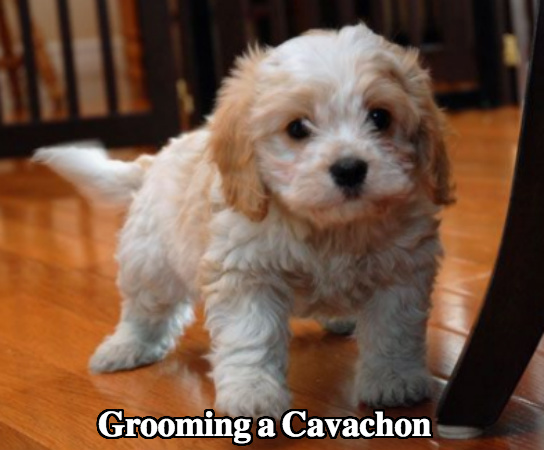
Start the grooming session with a gentle massage to relax your pet. While performing the massage, check for flea bites. Cavachon dogs are particularly sensitive to flea bites, so you may notice skin irritation and swelling if fleas are present. Watch out for scratches or lumps under the skin.
Step 1
First of all, grooming sessions are bonding opportunities. Take the chance to connect with your pet by giving it a gentle massage.
Step 2
Cavachons are highly sensitive to flea bites. Check it for fleas and skin irritation.
Step 3
Use a soft brush to comb your dog’s hair. Doing so eliminates loose hairs and stops tangling. Begin from the head and brush in the direction of the hair growth. Do so more often during shedding seasons.
Step 4
Comb your dog’s hair with a metal comb if it has tangles or mats.
Step 5
Clip your Cavachon’s hair regularly with scissors.
Step 6
Then, it’s time to clip your dog’s nails. Massage your dog’s paws gently if it’s not familiar with the process. Let it get used to being handled.
Use guillotine or scissor type nail clippers. In general, avoid cutting into the pinkish area called the quick. That would cause severe bleeding.
The Cavachon’s nails pose a challenge because they could be black or white, depending on the color of the coat. If the former is the case, cut a few pieces until you see a pinkish oval – that’s the Quick.
Step 7
Every grooming session should include teeth cleaning. Brush your Cavachon’s teeth daily to prevent periodontal disease. Never use fluoride toothpaste as dogs are allergic to it. Use toothpaste formulated for dogs instead. It comes in many flavors.
Step 8
Clean your Cavachon’s ears regularly to prevent wax and bacteria from building up in them. Insert saline solution with an ear dropper and massage it. Let the dog shake its head.
Step 9
Cavachons need bathing about once a fortnight, but how often you should bathe your pet depends on your lifestyle. Massage dog shampoo into your dog’s hair and work in the direction of the hair growth. Rinse it off, then either towel dry or use a hot air blower on medium heat.
Cavachon Diet and Nutrition
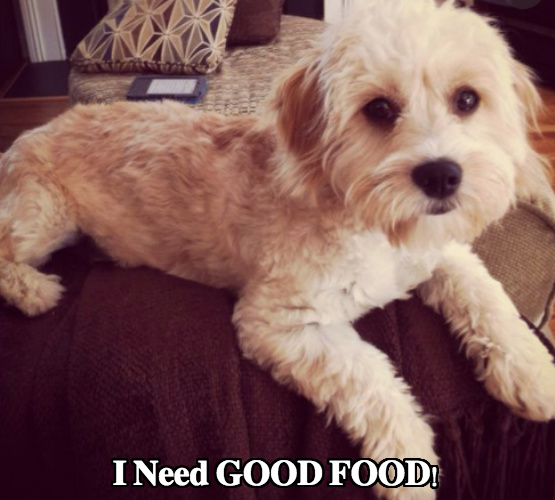
A healthy dog is one that’s well-fed.
A Cavachon thrives on green, leafy vegetables and fruits, which supply the antioxidants they need. Pumpkin and Squash give them fiber, while whole eggs provide lecithin. Sweet potatoes are reliable sources of carbohydrates, while pumpkin may offer them dietary fiber.
Also, there are dog foods for small breeds like the Cavachon which are readily available. Here are a few that may interest you.
1. Merrill Little Plates Grain Free Small Breed Recipe
Merrill produces premium quality food with the nutrients that dogs need. It has the taste they love too. The company has a recipe for dogs that cannot tolerate poultry.
The recipe has grain free nutrition without gluten. It also contains ingredients that aid digestion. Omega-3 fatty acids encourage healthy skin and coat.
The probiotics and probiotics in this fantastic recipe aid digestion as well. The small pieces of kibble are crunchy and clean teeth.
2. Purina Pro Plan Focus Small Breed Dog Food
Purina has pets as its passion and thus manufactures dog food that’s safe for them. The company thrives on the spirit of innovation.
The Pro Pan contains premium proteins like chicken. Natural prebiotic fiber, sourced from wheat bran, helps to promote digestive health.
Wheat bran offers natural prebiotic fiber. It also contains healthy vitamins and minerals like calcium and phosphorus.
This incredible formula is full of Vitamin A and Omega-3 fatty acids, which promote healthy skin and a luxurious coat.
3. Nutro Ultra Dry Dog Food for small breed adults
Nutro’s philosophy is that a pet’s food gives it holistic energy. As such, it creates clean, purposeful recipes that aren’t genetically modified. All of its products are safe for your Cavachon.
Nutro offers superfoods for all dogs. The Ultra Small Breed Dry Dog Food contains whole chicken, grains, and a blend of 12 superfoods, all selected with care for the benefit of your pet.
This recipe is full of flavor. It has three wholesome proteins from lamb, salmon, and chicken. There are no added preservatives.
Nutro partners with trusted farmers to source high-quality ingredients. There are no artificial preservatives, and everything is organic. There are no genetically modified ingredients either. Do note that traces may be present because of cross-contact during the manufacturing process.
You can feed it together with wet food. Besides promoting healthy skin and coat growth, it is full of flavor. Nutro also helps your pet maintain energy and bone health as well.
Cavachon Health Problems
Unfortunately, the Cavalier is prone to health problems. Cavachons may develop heart failure and other conditions in their old age. Do consult your vet for advice on dealing with these issues.
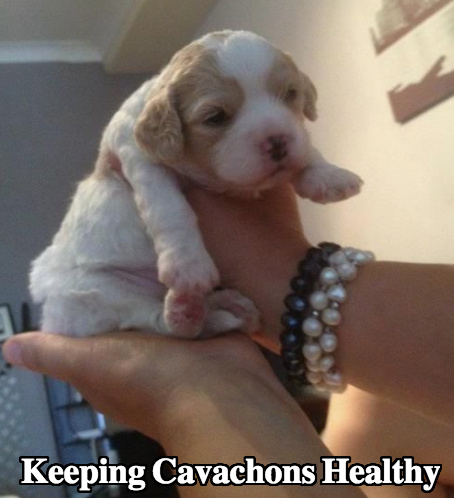
1. Atopic dermatitis
Atopic dermatitis, or allergic skin disease, is common in Cavachons. Rashes may appear on the lips, ears, paws, and bottom.
To reduce complications from this ailment, keep the air in your home clean and fresh. You may use Air Therapy Systems that remove pollen and dander.
2. Cataracts
Cataracts are quite common in older dogs. The Cavachon is relatively prone to them. Some of them may develop congenital cataracts that impair their vision. Many of them are removable.
3. Cushing’s disease
This syndrome comes about because of excess cortisol. It is most common in older Cavachons and is likely due to tumors in the adrenal gland. A vet will usually prescribe medication instead of surgery.
4. Mitral endocardiosis
This condition is the degeneration of the mitral valve of the heart. It causes blood to flow backward through it, in turn enlarging the atrium. Fluid thus accumulates.
Ideally, doctors will treat it by removing and replacing the valve. In most cases, they put a dog on medication for a few years.
5. Patellar luxation
This condition refers to the displacement of the hind limb. Left untreated, it causes lameness. Surgery can correct it.
Breeding a Cavachon
If you are breeding a dog for the first time, you’d want a few tips. These are some of the questions you may have.
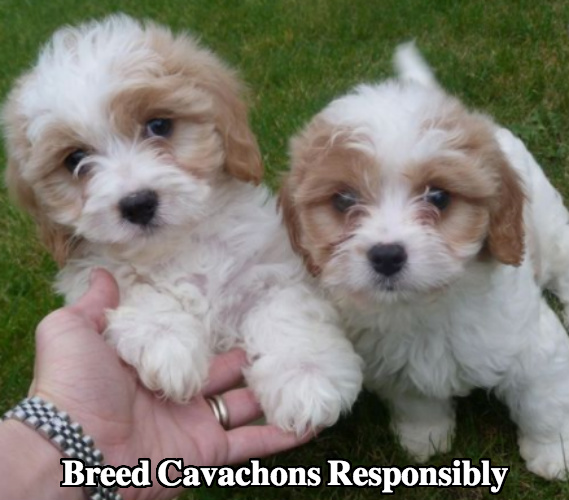
1. How old should my Cavachon be before I breed it?
A reliable breeder would breed a dog when it’s at least 18 months of age. He or she would not get a dog to mate on its first or second heat because it isn’t fertile.
A female’s fertility will decrease from the age of 5, although unlike women, she will not end her menstrual cycle. That said, the older she is, the less able she will be to cope with pregnancy. Males, too, become less capable of breeding as they age because their sperm counts will decrease.
2. What does ‘prime time’ mean?
The prime time for breeding female dogs is usually between 18 months and. 11/2years. This period is when a female is most fertile. Although it doesn’t experience menopause, its progesterone levels are highest during this time.
3. When is the female ready to mate?
A female should be ready to mate about 11 to 13 days after it starts bleeding. Bring both dogs together and determine if it’s in the first or second stage of her estrus cycle. It’ll be more aggressive toward the stud if it’s in the first stage. Conversely, it would flirt with the male if it’s in the second stage. There are no prizes for guessing when it should mate. At this point, the stud should want to mount the female.
4. What is a tie-in?
Dogs will eventually mate if the female is receptive. The process may be a long one. One of these is the tie, which is the scariest for owners.
The male will mount the female and penetrate her. Once this happens, the stud will turn and start the tie. Both behinds touch uncomfortably for the dogs. It only stops when the male’s penis no longer swells.
What’s frightening about this is that it takes quite a bit of time, and the female may want to run away because of the pain. Any attempt to break apart would harm either or both of them. You would have to calm the dam if she gets worried.
5. How long does pregnancy last?
Gestation usually lasts for between 58 to 68 days. Make sure that the vet monitors the female to ascertain the number of puppies it’s carrying and that she’s coping well with the pregnancy.
6.How many puppies could my dog have?
The number of puppies a dog can have depends on its size. The smaller it is, the fewer puppies it will have. Cavachons are small and may give birth to between 1 to 4 pups per litter.
7. What’s inside a whelping kit?
It’s always advisable to have a whelping kit ready if you’re doing the breeding yourself. A whelping package typically contains:
a. A whelping box
This box should be large enough to house the mother and all its puppies.
b. A Whelping mat
A whelping mat keeps the mother and puppies comfortable. You could opt to buy one from a pet store or use blankets. Cleanliness is paramount, whichever you choose.
c. A Heat Lamp
Have a heat lamp for warmth. Again, it’s necessary to keep Mother and pups comfortable. It also helps newborn puppies regulate their temperature.
d. Puppy scale
It’s imperative that you weigh your puppies. Do so to ensure that they are in good health. A puppy scale will enable you to do this regularly.
Obedience training for Cavachons
A Cavachon can be quite strong-willed, so teaching it basic commands is essential. Here are four instructions that every dog should understand.
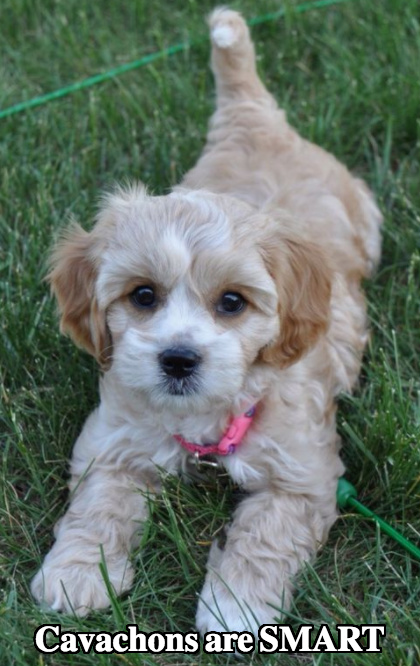
1. Sit
First of all, teach your little Cavachon to sit. This command is typically the first one that owners introduce. When used with other instructions like ‘stay’ and ‘come,’ it keeps your pet safely in place.
To teach it, start with your pet in the standing position. Wave a delicious treat in front of it and move it to the back of its head. The movement will cause your dog’s bottom to lower. When it’s in this position, give it the treat and praise it.
2. Come
Teach this command in a secluded area with no distractions. Start at your dogs level and open your arms. Call it using a positive tone. Have a treat in your hand. Offer the goodie to your dog when it arrives.
Introduce the word ‘come’ after it has done this with success a few times. The dog will begin to make positive associations with it. Your pet will also understand that ‘come’ connects with the action of moving towards you. Don’t forget to reinforce this behavior with treats and praise.
3. Down
This command is the most difficult to teach by far because it puts your pet in a submissive position. No human or animal likes that. However, it is an instruction that will keep your pet from jumping up on guests. It will also keep the dog safe in high-risk situations(e.g., traffic stops and busy roads).
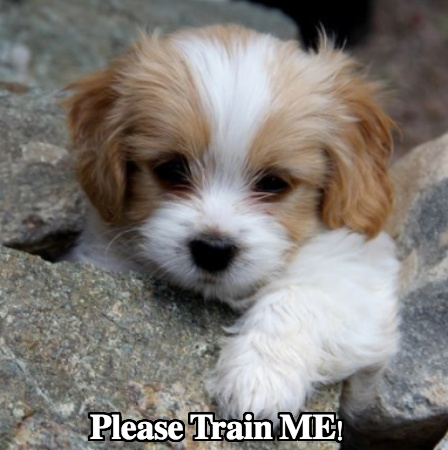
Your dog should already know how to sit. Show it a treat. Put it near the dog’s nose and move your hand down to the ground. Get your pet to mimic your movement. Its body will lower, and its elbows should touch the ground. Give it the treat when it manages this successfully.
4. Stay
This command is perhaps the most important one to teach your Cavachon because it’s apt to follow you. As we’ve discussed before, this little fellow may be prone to some separation anxiety.
It should know the first three commands before attempting to learn this one. Get your dog to sit. Hold your palm up and tell it to ‘stay.’ Ensure that you have a treat in your hand. Turn around and move away from the dog. It may follow you at first, but don’t be discouraged. Wait a few seconds then ask it to stay again. Repeat this until your pet becomes familiar with the instruction. Always remember to reward it with the treat.
5. Shake paws
Yes, pets can shake hands- or paws- too. Your Cavachon will impress your guests.
Begin with your dog in a sitting position. Have a treat in one hand and show it to your pet. Close your fist as it tries to grab the goodie.
Say the word ‘paw’ or ‘shake.’ Wave the treat in front of its nose. At this point, your pet should be digging your hand for the goodie. Praise it when it does. Open your palm and give it the treat.
How to stop annoying Cavachon Behaviors
No human being or dog is perfect. Your pet will be prone to some behaviors that may annoy you and others. Like a child, it needs guidance. Here are some of the common reactions that every owner should try to correct.
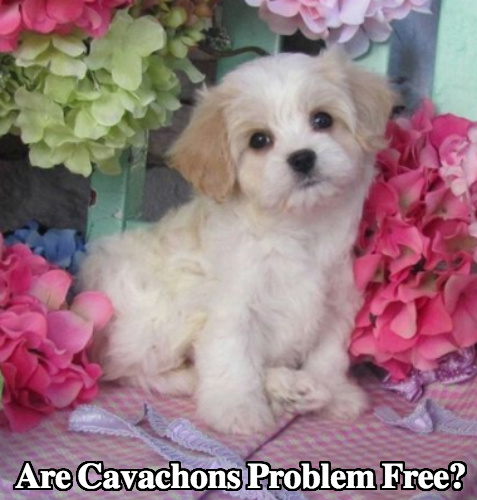
1. Barking
First of all, your Cavachon may be lonely when you’re not around. It may show its frustration by barking. The noise may annoy you and your neighbors.
Note that you don’t want your dog to stop barking completely. You will still need it to inform you if a stranger is at your door. The idea is to get it to stop when told.
Find out what makes your dog bark. If the cause is separation anxiety, deal with this first. Read the section on this below. It’s always best to ignore the barking behavior and reward the dog when it’s quiet. Consistency is the key to success.
2. Jumping
Dogs will jump on their owners out of excitement. They may be thrilled to see strangers and pounce on them in greeting.
While greeting is pleasant and charming, it may frighten or hurt someone. To teach your pet not to jump, ignore its behavior. You want your pet to learn that jumping isn’t appropriate, but that you’re not angry with it. Reward it when it is calm.
3. Chasing
The Cavalier in your Cavachon may prompt it to chase buses and cars on the roads. No one needs reminding that this is dangerous. You’ must discourage the chasing behavior.
Begin your training indoors and gradually move outdoors. The ‘come’ command is an essential one for your pet to learn. Get it to come to you when it shows that it’s about to move. Keep it on a leash outdoors, and give it opportunities to chase birds at dog runs or the beach.
4. Chewing
No owner likes to see his slippers in tatters when he comes home. Chewing is an integral part of a dog’s genes.
That said, you must protect your shoes. You must also prevent your restless Cavachon from nibbling at your wires. Be calm and assertive in front of your dog. Say ‘no’ when you see it biting your shoes, and replace them with a safe chew toy.
5. Begging
There’s no doubt that human food is tastier than dog food. We use far more sodium when we cook for ourselves than for our pets. Hence, they’ll find what we put on our tables attractive.
Don’t acknowledge begging behavior, even with a ‘no’. Giving your dog attention tells it that the action is acceptable.
Another way to get your dog to stop begging is to feed it when it’s mealtime for yourself. If you sync your mealtimes, there’ll be no reason for it to ask for more food.
6. Digging
Digging can be a problem if you live in a house with a garden. Dogs resort to this when they are bored.
Keep it in an area of your garden where you won’t mind a few holes. Your pet will know that this is the area where it can play. Also, exercise it regularly. Constant activity will reduce its tendency to dig.
7. Gulping
Your Cavachon may have developed this behavior as a puppy because it wanted to get a chance to drink its mother’s milk. Its more dominant littermates may have prevented it from doing so.
To prevent your pet from gulping, let it eat from a small-sized bowl. There are also bowls designed to keep your pet from taking food in too quickly.
8. NIpping
Your Cavachon puppy may nip you to express its desire to play. Cute as it is, the behavior may turn aggressive if ignored.
To rein your puppy in, let out a yelp when it nips you. Then, avoid interacting with it. This action sends the message that the behavior isn’t acceptable.
9. Aggression
Your Cavachon is small, so it may try to assert itself in front of large dogs. Though this is quite rare, it may be wary of strangers.
Socialize your dog and let it mix with people and their pets. Bring it on daily walks or to dog runs. Remember to keep it away from situations when a conflict may arise.
If your dog gets into a fight, go behind the dominant dog. Lift its legs. Doing this will surprise the dogs enough to stop the fighting. You may also spray water on them if a hose is nearby.
In all, the Cavachon makes a sweet, even-tempered companion. It will be the ideal pet for you if you potty trains it and teach it basic commands. Proper nutrition will keep it healthy and allow you to enjoy many years with it.
